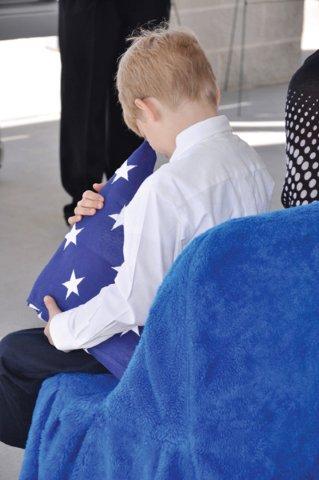came to regard the Jordanian physician as an instrument for exacting revenge on the CIA.

The town of Khost lies on Afghanistan’s eastern fringe in territory long controlled by the Haqqani network, allies to the Taliban and al-Qaeda. The city’s greatest landmark, a blue-domed mosque, was built by the clan’s patriarch, Jalaluddin Haqqani, a friend of Osama bin Laden.
The first Americans to arrive in Khost after the fall of the Taliban were a CIA-led team of Special Forces troops and paramilitary officers. They established Forward Operating Base Chapman, now known to most officers simply as Khost, at an airfield outside of town. It became a key outpost for gathering intelligence in eastern Afghanistan and in the Taliban heartland just across the border.

Jeremy Wise, thirty-five, fought in Iraq as a Navy SEAL before leaving the armed services in 2009. Newly married with a young son, he received an offer to work for the security contractor Xe Services LLC, formerly known as Blackwater. Wise traveled to Khost in mid-December 2009 for his first deployment protecting CIA operatives in Afghanistan.

At forty-six, Dane Paresi was one of the oldest and most battle hardened of the Americans at Khost. As a Green Beret, he had won a Bronze Star for his role in destroying a column of al-Qaeda and Taliban fighters in eastern Afghanistan. Paresi also had recently joined Blackwater in hopes of building up a nest egg for retirement.

Harold Brown Jr., thirty-seven, was a onetime army intelligence specialist who worked in private industry before returning to government to work for the CIA. At Khost, his first overseas posting, he was invited to help evaluate the Jordanian informant, Balawi, who claimed to have connections to al-Qaeda’s inner circle.

Scott Roberson, thirty-eight, busted drug dealers as an Atlanta police officer and protected U.S. dignitaries in war-torn Iraq before joining the CIA in 2009. He became the head of security at Khost and sparred with CIA managers over how to handle security for the planned meeting with Balawi.

Atiyah Abd al-Rahman, a senior al-Qaeda leader in Pakistan, appeared with Balawi in a fabricated video designed to convince the CIA that the Jordanian doctor had penetrated the terrorist group’s inner circle.

Al-Qaeda commissioned a special suicide vest for Balawi, using military-grade C4 explosives as well as about fifteen pounds of steel pellets and other metal fragments to serve as shrapnel. The device, though snugly strapped to the bomber’s midsection, could be easily detected by anyone brushing against it.

Humam al-Balawi posed for several “martyrdom” videotapes before beginning his mission. In this video, he showed off the detonator he would use to set off a suicide bomb strapped to his chest. “Don’t think that just by pressing a button and killing mujahideen, you are safe,” he said, referring to the CIA and its Predator attacks.

In another martyrdom tape, Balawi (right) appears seated with Hakimullah Mehsud, his host in Pakistan. “His conscience did not allow him to spy on Muslim brothers for the infidels,” Mehsud said of Balawi.

The CIA’s Darren LaBonte (left) and the Mukhabarat’s Ali bin Zeid posed for a snapshot at Khost on the day before Balawi’s arrival. The two were partners on terrorism cases in Jordan and became close friends before they teamed up for the Balawi case.

Jordanian agent Humam al-Balawi entered the CIA base through this gate and was waved by without a search. CIA operatives often insisted that high-level informants have no contact with Afghan guards at the base, for fear that their identity might be compromised.

The meeting was set to take place inside the CIA’s heavily guarded compound within the Khost base. Balawi was driven past three guard stations before pulling up outside the building where he was to meet with bin Zeid and the Americans. He was greeted by a group of sixteen intelligence operatives anxious to debrief him.

CIA director Leon Panetta (left, front) vowed to strike back against the al-Qaeda leaders responsible for killing the seven officers at Khost. In June 2010 he presided over a ceremony adding new stars on the CIA’s Memorial Wall for the slain officers and contractors.

Under Panetta’s direction, the CIA targeted Hakimullah Mehsud and al-Qaeda’s No. 3, al-Masri, in a series of missile strikes in the spring and summer. Panetta acknowledged that “systemic” problems had contributed to the CIA’s deadliest day in a quarter century.

Ethan Wise embraces the flag that draped the coffin of his father, fallen security guard Jeremy Wise.

